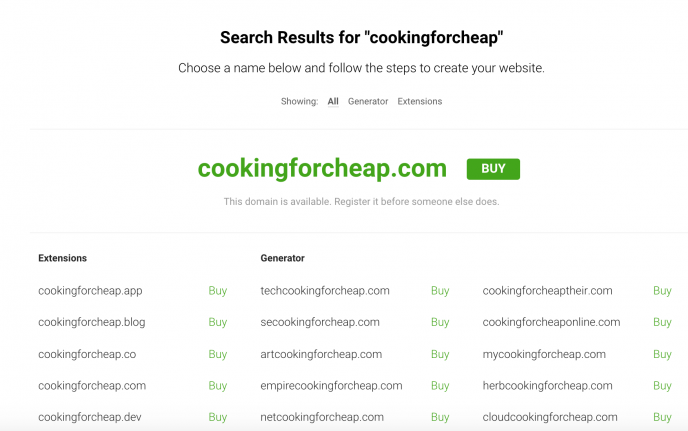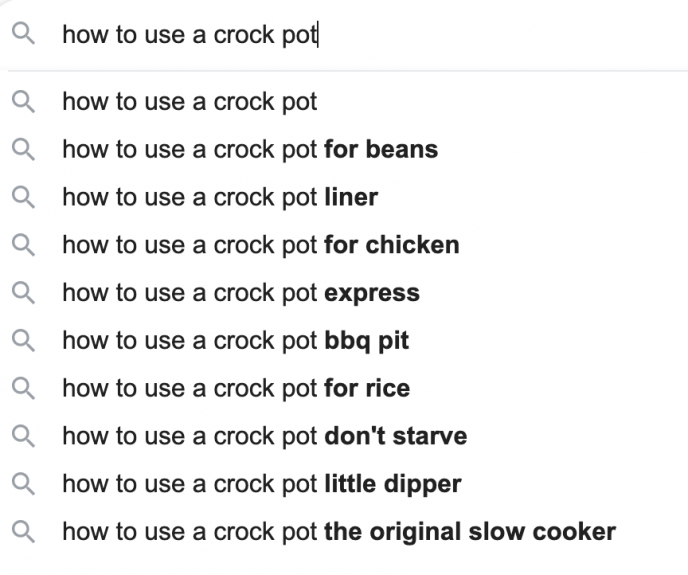When you start a blog, there’s a lot that goes into the process of creating your first post. Because there’s a lot to navigate, it’s best to work in steps to see the results you were hoping for.
Content marketing is a crucial strategy for any business trying to generate leads, grow an email list, and produce sales. If you want to build a community of loyal readers, it’s important to do your research and know what to expect first.
If you’re interested in crafting your first blog post, here are a few tips to get you started.
Pick a Blog Name
Perhaps your blog name has been stuck in your head long before you started this process. Or, you might face trouble crafting a name that suits your content and its personality. If that’s the case, then don’t be afraid to use a blog name generator.
Name generators are great tools for those who need a creative twist on their existing ideas. Choosing the wrong name can set you back, turn your target audience away, and fail to drive conversions to your blog content. So, it’s crucial to pick a blog name that represents your brand and its values.

Know Your Audience
You might feel tempted to dive into writing your first blog post based on what you’re interested in writing about, but stop. Before you do anything, you need to understand your audience. You may think you have a few topics floating in your head for blog posts they’ll enjoy, but without research, you won’t know for sure. And leaving your content marketing strategy up to guesswork will fail to drive the results you want.
You need to research your target market so you know what content you create will drive conversions. Otherwise, your blog content will sit on the internet without engagement, which is a waste of time and resources.
But if it’s your first blog post and you have yet to build a loyal audience, how can you perform research on them?
You can find out more about your target audience by:
- Spying on your competitors. What do they do in their blog content that works? What doesn’t work? Look at their blog comments and pay attention to their readers’ feedback so you can apply it to your own strategy.
- Paying attention to social media. With more than three billion social media users worldwide, your audience uses these platforms to talk about their brand experiences. Search for relevant keywords surrounding your niche and see what people have to say. They’ll likely discuss their current frustrations or issues that perhaps your brand can provide.
- Narrowing down your niche. Perhaps you want to start a food blog. You know your audience consists of those who want to learn how to cook, but you can narrow it down even more. Do you want to create content for experienced chefs or beginner cooks? When you know the specific details, you can create more targeted content that speaks to your readers and makes it easier to promote your products down the road.
Choose a Relevant Topic
When you know your target audience, it’s easier to choose relevant topics for your blog posts. If you’re a cooking blog that also posts makeup tips, you’ll fail to build a stable, niche audience. You want to choose specific topics that solve a problem and relate to your audience.
To pick relevant blog topics, you need to perform keyword research. This is when you look up what search terms your audience is looking for so you know what they’re looking for right now.
If you’re new to blogging, you can start by searching for keywords in Google’s search engine. Pay attention to the auto-suggestions as these are the related questions people have already asked.
Let’s say you want to write a blog post about using a crock pot, but you aren’t sure which topic would work best for your readers. Go to Google, type in your question, and watch the automated results pop up:

From here, you can collect ideas to add to your crock pot blog post.
Create an Outline
It’s much easier to have a smooth writing process if you create an outline first. Outlines break your content into smaller sections so it’s easier to organize information for your audience. The easier it is for them to follow along, the longer they’ll engage.
Your outline will need:
- Headings
- Subheadings
- Whitespace
- Paragraphs broken up by topic
If you dive into your blog post right away, it’ll take much longer to organize its different sections and turn it into a cohesive piece. So make sure you take your time with your outline so you can generate leads and drive traffic.
Write, Write, Write
Perhaps the hardest part of creating your first blog post is writing it. You’re done with the planning, brainstorming, and crafting, and now you’re ready to produce.
While writing, remember who you’re writing for. If your audience consists of beginners, then talk to them like beginners. Using big, fancy words will turn them away from your post and take them somewhere else to understand the concepts better.
It’s also important to add your brand personality to your writing. It’s what makes your brand unique and will attract more loyal readers to future posts. People want fresh, exciting content that thinks outside the box and offers a different perspective. So, don’t be afraid to let your brand identity shine through.
Over to You
Creating your first blog post doesn’t have to be a headache. With enough preparation and research, you can create a first-time blog post that gains traction and boosts engagement with new readers. What tips will you follow to write your first blog post?
Syed Balkhi is an award-winning entrepreneur and online marketing expert. He is the co-founder of OptinMonster, WPBeginner, MonsterInsights, and WPForms.
